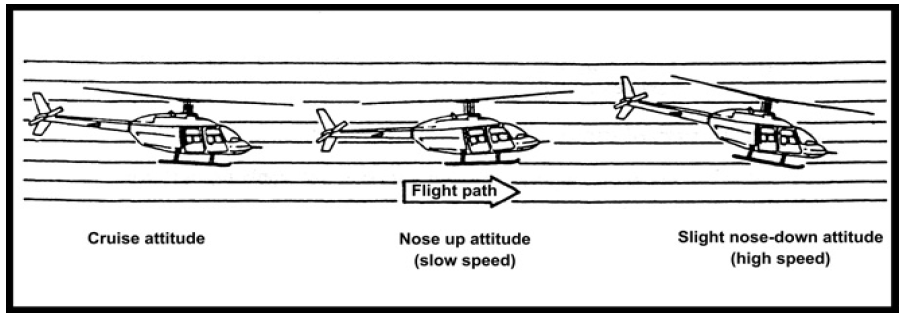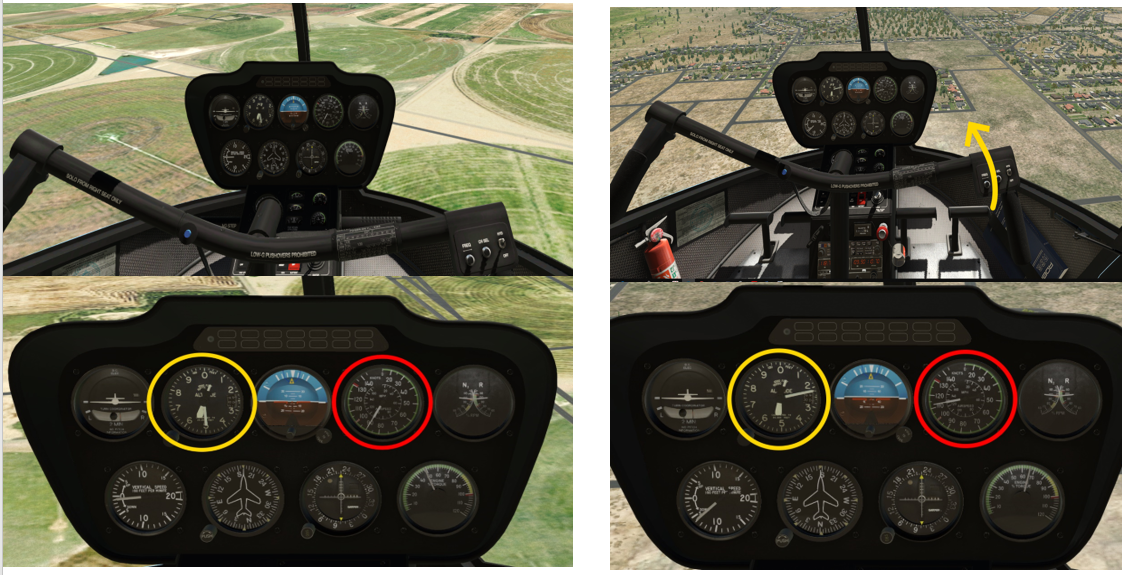¶ Introduction
There are basically two reasons why the pilot must increase the speed:
- to increase cruising speed in straight and level flight
- to increase cruising speed to achieve an optimal speed of climb in order to reach the cruising altitude after take-off
Helicopters have a throttle, but it is not used to change their speed as is the case on airplanes. Increasing the speed requires using another method.
Do not use the throttle to change the speed of the helicopter. The throttle is used to increase or decrease the rotational speed of the main rotor. By increasing the throttle, the rotational speed of the main rotor will increase, and the helicopter will have an attitude that can make it uncontrollable to continue the flight.
It is mainly the Cyclic Pitch Control that will be used to increase the speed of the helicopter, associated with good management of the other Helicopter controls and good observation of the attitude.
¶ In practice
We can define straight and level flight as flight at a constant altitude, on a constant heading, with a constant airspeed in co-ordinated flight, usually during the cruise

To increase speed from a straight and level flight, the collective must be pushed forward with small and smooth movements. As the nose of the helicopter descends, speed increases
The example below shows a helicopter in a straight and level flight at 5500ft with a speed of 90kt, increased to 120kt by pushing the cyclic forward:

In the red circle, we can see that the speed has increased, but in the yellow circle, we can see that the altitude has decreased from 5500ft to 5200ft
The other problem is that if the cyclic is adjusted by pulling it back to find a good attitude again, the speed gained will be lost if no change is made to the power
If the cyclic is pushed forward, the helicopter will accelerate, but it will also lose altitude, it is necessary to increase the collective after pushing the cyclic to avoid losing too much altitude and not to lose the speed gained when the cyclic will be readjusted to find a good attitude
¶ In Summary
To reach the desired speed:
- From a straight and level flight, push forward the collective slowly and smoothly �?' The speed increases
- As the cyclic is pushed forward, the altitude decreases �?' Raise up the collective
- Anticipate the moment when the helicopter will reach the desired speed by checking the speed indicator
- Before reaching the desired speed, apply backward pressure on the cyclic to find a good attitude of flight and resume a straight and level flight with the new speed.
During the entire maneuver, it is necessary to make corrections with the pedals, every time the collective is raised or lowered.
- None
- Helicopter Fly training manual, transport canada (2nd edition)
- VID 514786 - Creation
- VID 496402 - Wiki.js integration